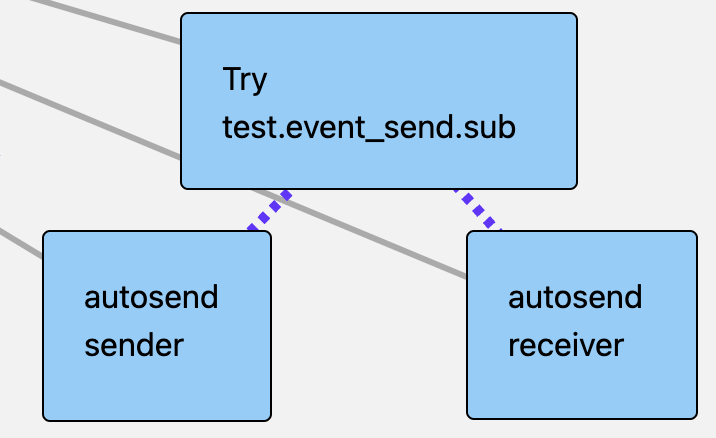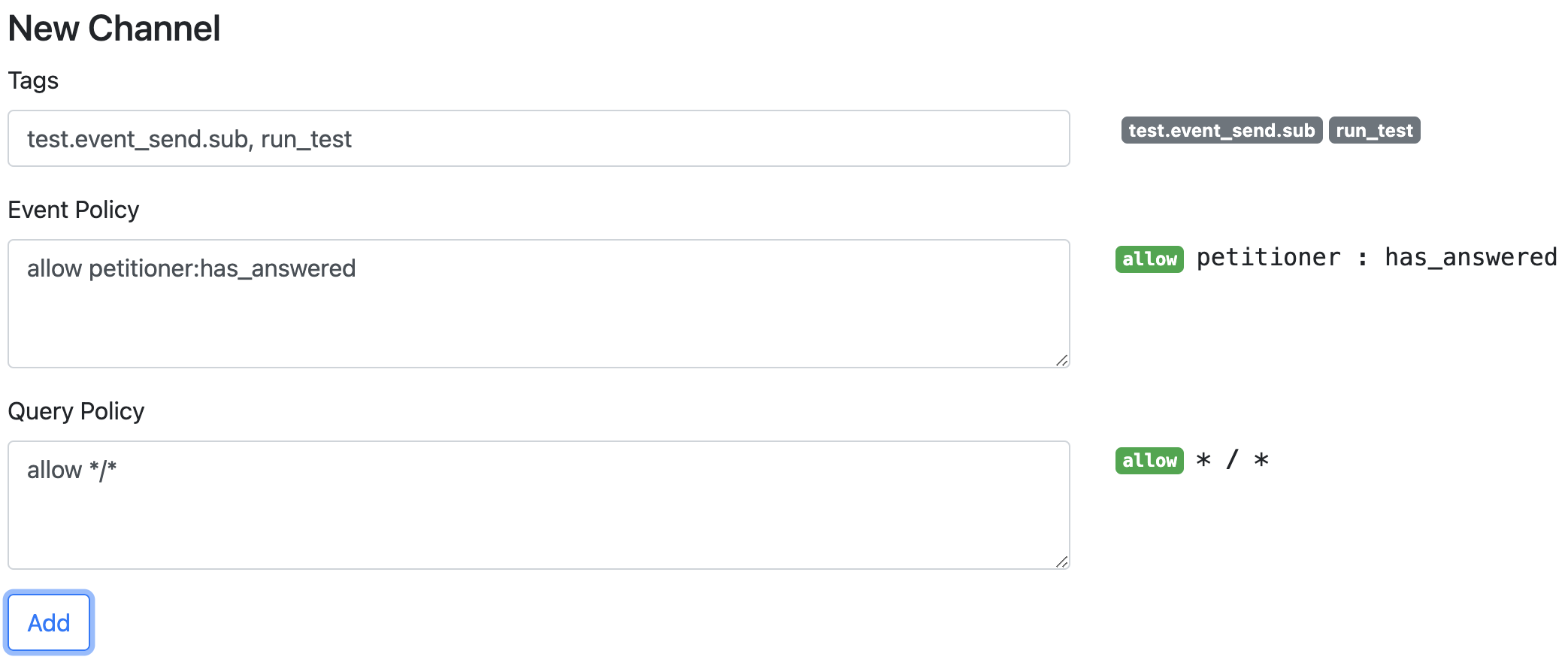KRL-experiments
event:send testing for picos related by subscription
KRL includes a built-in event module.
The module provides a send action
(see documentation page “event”).
It has been suggested that an alternate form of event:send could allow the KRL programmer to specify
a subscription identifier instead of an event channel identifier (ECI).
Test setup
The setup will be a test pico and two other picos to which it is related by subscription;
the test pico will play the role of "petitioner" while the other picos will play the role of "responder".
A simple setup will look something like this:

Simple setup
Create the test pico, make subscriptions between it and two other picos, and add a new channel for testing purposes.
- Make a test pico named, say, “Try test.event_send.sub”
- Make a note of its wellKnown_Rx channel identifier (say, cld0li17e002ba5mbcq3l2q7k) from the Channels tab or the Subscriptions tab (shown below)

- Choose two other picos, named whatever
- In each of their Subscriptions tabs, make a new subscription:
- wellKnown_Tx: the wellKnown_Rx of the test pico, e.x. cld0li17e002ba5mbcq3l2q7k
- Rx_role: responder
- Tx_role: petitioner
- name: test.event_send.eci
- channel_type: subscription
- Tx_host: leave blank
- password: leave blank
- In the Subscriptions tab of the test pico, accept both Inbound subscriptions
- In the Channels tab, create a new channel, shown below
- Tagged test.event_send.eci
- Allowing event petitioner:has_answered

More complex setup
Have at least one of the picos be hosted by a pico engine running in a different domain and/or port.
This would more fully test the event:send operations.
But the first test wouldn’t run as written, as the host argument would need to be known.
Tests
First, a regression unit test to ensure that event:send works as presently constituted.
Then, a TDD test to show that the new form doesn’t work.
This second test can double as a regression test, once the feature has been implemented.
Then, another TDD test to show that passing in the entire subscription map doesn’t work.
This third test doubles as a regression test, once the entire map feature has been implemented.
Testing the use of an ECI in event:send
- In Rulesets tab of test pico, install the test.event_send.eci ruleset from this repo
- In Testing tab of test pico, select new channel, and click the
petitioner:has_answeredbutton - Using the Logging tab, check to see that both related picos received the event and that no other pico has received it
Testing the use of a subscription identifier in event:send
- In Rulesets tab of test pico, delete the
test.event_send.eciruleset from this repo - Install the
test.event_send.subruleset - Repeats steps 8 and 9 of the ECI test and the results should be the same, noting that is one of the other picos may be on a different host
Difference between the two KRL rulesets
$ diff UnitTest/event_send/test.event_send.*
1c1
< ruleset test.event_send.eci {
---
> ruleset test.event_send.sub {
14c14
< event:send({"eci":s{"Tx"},"eid":"none",
---
> event:send({"sub":s{"Id"},"eid":"none",
Testing the use of an entire subscription map in event:send
- In Rulesets tab of test pico, delete the
test.event_send.subruleset - Install the
test.event_send.sub_mapruleset from this repo - Repeats steps 8 and 9 of the ECI test and the results should be the same, noting that is one of the other picos may be on a different host
Differences between the two subscription-based KRL rulesets
$ diff UnitTest/event_send/test.event_send.sub*
1c1
< ruleset test.event_send.sub {
---
> ruleset test.event_send.sub_map {
13,14c13,14
< foreach subs:established().filter(resp) setting(s)
< event:send({"sub":s{"Id"},"eid":"none",
---
> foreach subs:established().filter(resp) setting(a_sub)
> event:send({"sub":a_sub,"eid":"none",
16c16
< "attrs":event:attrs},s{"Tx_host"})
---
> "attrs":event:attrs})